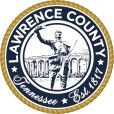A contest that allowed people to support their favorite state park at $1 a vote resulted in $1,298 raised for David Crockett State Park.
The local park reached ninth place in a field of 19 state parks with 350,000-750,000 annual visitors. South Cumberland State Park got the most votes in the category and $5,706. Indian Mountain State Park received $500.
Park Director Rachel Lee said with additional support from the Friends of David Crockett State Park, funds will be used to install an ADA swing at the Shelter One swing set.
Pool replacement
A public meeting held at the Park in December sought suggestions for a new amenity to replace the existing swimming pool, due to its condition and decreased use.
“A lot of ideas were generated,” Lee said, including a playground, obstacle course, zip lines, and an unpaved biking area. Now that the time for public comment is over, the suggestions will be compiled and a project drawn from them.
‘Wild’ areas help natives
A portion of the former Crowder Farm – 287 acres purchased by the park in 2015 – and some grassy spaces in public areas are being left unmown to help regenerate native grasses and improve wildlife habitat.
Because it’s a cool-season species that grows year-round, fescue is one of the most common non-native grass in this area, but its root system creates a carpet that is difficult for small animals to navigate, or use for shelter.
A good example is the Bob White Quail, whose population has decreased significantly here. Young ones “about the size of a ping pong ball” have a higher survival rate when they live among native grasses that grow in clumps. Lee is working with conservationists that specialize in the quail population to increase their numbers here.
When snow fell earlier this month, another difference was visible. Taller native grasses held the snow slightly above the ground, providing space for small animals to maneuver unseen. The structure of fescue and other non-natives allows the snow to pile directly on the soil.
To eliminate non-natives, the areas will be burned and treated, Lee said. Natives including Big- and Little Blue Stem, Sage and Indian Grasses will be sown there, and some natives that lie dormant in the soil could re-emerge on their own.
“Natives’ roots go a lot deeper and have amazing color.” Park visitors can also expect to see native flowers like Black-eyed Susan and Coneflower in the mix.
Park stays are popular
Major improvements have been completed at Campground 1, including increased wattage for electricity hookups. Other campsites are being enlarged, a few at a time, to accommodate modern RVs. “1960s campers were much smaller,” Lee explained.
COVID-19 restrictions made camping extremely popular and the trend has diminished only slightly. Revenue from camping almost hit fiscal year 2020-21 projections in October, just four months into the year. Staff members must now strictly enforce check-in and check-out times (4 p.m. and noon, respectively) because new arrivals are always waiting for their assigned site.
Campsites are usually empty this time of year, Lee said, but “we had 13 campers in the snow.” Park cabins are typically occupied on weekends now and are booked solid beginning with spring break through the summer months.


